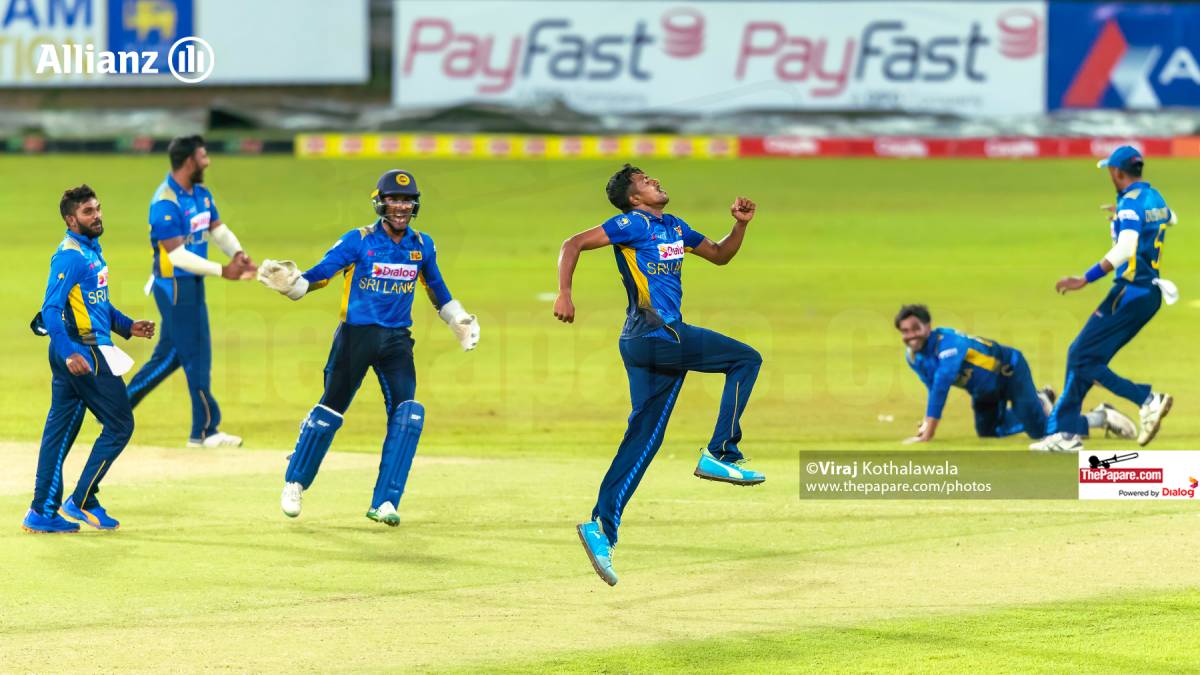About three years ago, a teenager was deemed obese and unfit for the Sri Lanka U19 World Cup squad. Is he the first one to be left out for this reason? No. Is he one of the very few who came back with a stunning transformation? Yes. And that is the reason to believe in the survival of the 21-year-old mystery spinner, Maheesh Theekshana.
He who took the country by storm in the final ODI vs South Africa bagging figures of 4 for 37 and to understand what may be scattered on Maheesh Theekshana’s path, one needs to understand the careers of his predecessors, the so-called mystery spinners…..

The carrom-ball is the most prominent touch of mystery for Maheesh Theekshana. Sri Lanka’s Ajantha Mendis and West Indies’ Sunil Narine owned that delivery in international cricket before him. But rather surprisingly, despite possessing one of the most unique bowling types in the world, the careers of these two cricketers did not flourish for long enough.
Read: What is the key to becoming a successful batter in today’s cricket?
Both Mendis and Narine had identical careers.
If a fairy-tale ever spoke of a fairy tale start, that is what Mendis had in international cricket. In his first year, in 2008, he picked up a staggering 85 wickets across all formats with a bizarre average of 11.98 and economy of 3.28. He basically had batsmen twirled up under his foot begging for mercy. We are not talking of balls sneaking through bat and pad, we are talking deliveries that went in between their legs. That’s how lethal Mendis was.
Narine was quite the same. Even though it was technically not his first year of international cricket as he played 3 matches in 2011, he bagged 65 wickets in 2012. This Trinidadian spinner made things worse for batsmen when he opted to work his magic upfront with the new ball too.
This dramatic start went south sooner than anyone had anticipated. The very next year, Mendis dropped down to 56 wickets and Narine down to 40. By the third year, their covers were blown so to speak. They weren’t mysterious anymore. The Sri Lankan managed only 25 wickets the entire year and the West Indian returned 24.
Read: Why you can’t write about Sanga
Ever since then the world of cricket did not hear much about them or their mystery. Mendis made a comeback in 2014 and picked up 50 wickets in that year but was never the same guy he once was.
Narine is still a prominent and active part of West Indian Cricket. Many would even believe that his decline was because he was called for throwing, but the truth is, his disguise was compromised, and he did not have an escape strategy or, maybe he did. He turned out as a pinch-hitter to open the batting and support his case for selections. But that only kept the cricketer Narine alive, the bowler is on life-support.
After trying to prove Muttiah Muralidaran illegal, the cricketing world had forgotten about video analysing. Thanks to Mendis, it was revived and a blown-up image of Mendis’s bowling arm was a major part of the team meetings of the oppositions that took on Sri Lanka.
Teams delved into footage of Mendis so closely that they were able to pick every slight difference in each of his variations. Basically, he was decoded. And this theory was applied for almost all the bowlers then after and the analysing only kept getting better.
Read: Malinga – The Tactician
Speaking of Murali, he was a mystery spinner too. But his mystery turned into a legacy. That is exactly who Maheesh should look up to. Murali did not succeed because he was able to disguise his doosra, he was successful because his off-spin was still able to fetch him heaps of wickets and his variations were a constant work in progress. For a modern-day cricketer evolving is paramount.
In fact, Murali was one of the earliest cricketers to be under scrutiny of the video cameras. He openly allowed people to record his action in ultra-slow motion from all angles to prove himself as a legal bowler.
His willpower was way stronger than any of these analyses. He believed in his basics and did not let his variations overpower his regulations. He was able to tackle all conditions and had a strong arsenal of deliveries for each of them.

Read: Unfulfilled cricketing dreams
In today’s cricket, even the carrom-ball could be a stock delivery and there is no harm in it. If you are good at it and are able to pick wickets with it consistently, that is all what matters. So Maheesh can define his own stock delivery and master it to be Muralitharan-level good.
What we will have to wait and watch is will he change the fate of the mystery spinners by remaining up there for long enough.
Strength to Maheesh Theekshana. If the odds he has overcome is anything to go by, the little island just may have found its next trump card.


















